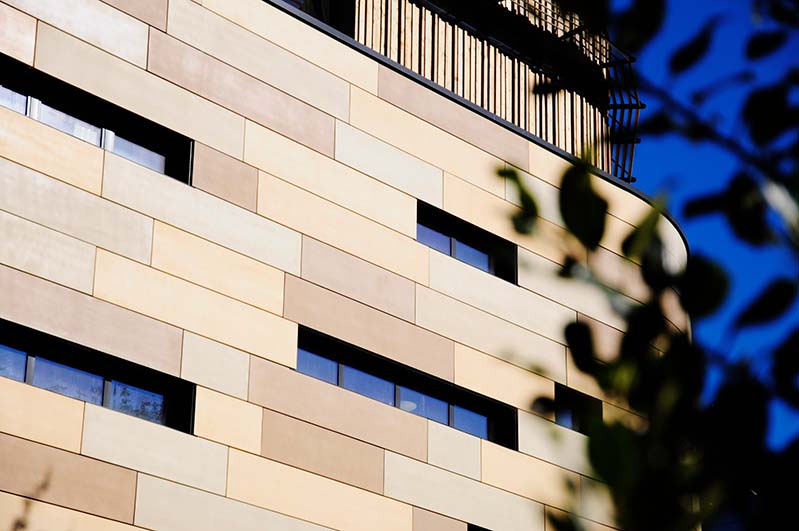Sustainability and Environmental Benefits of GRC
The main constituents of glassfibre reinforced concrete (GRC) comprise naturally occurring earth oxides that are used in the manufacture of cement and glass fibres. These base ingredients are not generally regarded as pollutants. Wash water from the manufacturing process contains cementitious residue (this is alkaline). It is usual practice for factories to have settlement tanks ensuring that solids are not allowed into the main drainage system, minimising the risk of blockages and related environmental hazards.
The reduced weight of GRC cladding, in direct comparison to steel reinforced concrete products, creates distinct environmental benefits.
An assessment carried out as part of a DETR/ Concrete Industry Alliance PIT Project comparing two concrete and GRC products that fulfil the same function. The results affirm that GRC has a significantly reduced environmental impact.
Aside from the GRC panels that we manufacture, we are also able to ensure that all fixing brackets are provided via completely sustainable process and are fabricated from *either recycled material or a recyclable source. This is an element which is often overlooked by other companies within the industry. GB Architectural Products, wherever reasonably possible, will ensure that we are doing everything we can to offset carbon emissions and provide a service in line with present sustainability expectations.
*By prior arrangement within the project specification.
As a proud member of the GRCA, who themselves have a longstanding commitment to sustainability and the environment, within this, our own individual responsibilities are of paramount concern .
